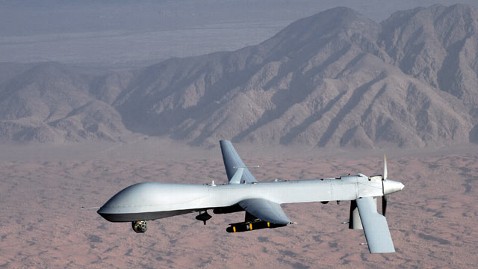Intel Chair: Civilian Drone Casualties in 'Single Digits' Year-to-Year

(U.S. Air Force)
The chairman of the Senate's Intelligence Committee said today that the number of civilians killed in America's drone strikes each year "has typically been in the single digits."
The chairman, Sen. Dianne Feinstein (D-Calif.), made the claim in her opening remarks at the Senate's confirmation hearing for CIA Director nominee John Brennan. Brennan, currently President Obama's counter-terrorism advisor, is widely described as the architect of the administration's counter-terrorism policy, including its increased reliance on targeted drone strikes.
"I've… been attempting to speak publicly about the very low number of civilian casualties that result from such strikes, [but] I've been limited in my ability to do so," Feinstein said. "But for the past several years, this committee has done significant oversight of the government's conduct of targeted strikes and the figures we have obtained from the executive branch, which we have done our utmost to verify, confirm that the number of civilian casualties that have resulted from such strikes has typically been in the single digits."
Feinstein's assertion appears to challenge data compiled by The Bureau of Investigative Journalism from media, human rights and purported eye-witness reports, which says that American drones have killed hundreds of civilians since 2008 from Pakistan to Yemen and Somalia.
In an August 2011 report on the BIJ's data, a senior U.S. official told ABC News that the Bureau's statistics were "way off the mark." At that time, the official said the U.S. government sees the battlefield "in real time" and that the total number of civilian casualties was closer to 50.
Brennan's hearing comes two days after NBC News published a Department of Justice document that summarized the legal justification for the Obama administration to mark a U.S. citizen for death by drone strike. At least three Americans have been killed in drone strikes, including high-profile al Qaeda cleric Anwar al-Awlaki, as well as his 16-year-old son.
The 16-page DOJ document says that the government can take out an American, who is a "senior operational leader of al Qaeda or an associated force," in foreign countries as long as:
- "An informed, high-level official of the U.S. government has determined that the targeted individual poses an imminent threat of violent attack against the United States"
- Capturing the targeted individual is "infeasible," and the U.S. would continually monitor whether capture becomes feasible
- The operation "would be conducted in a manner consistent with applicable law of war principles."
However, the document says that by "imminent threat," the DOJ does not mean the U.S. government actually has to have "clear evidence that a specific attack on U.S. persons and interests will take place in the immediate future," but rather a "broader concept of imminence" must take into consideration terrorists who are "continually planning" attacks and the typically limited window during which a lethal operation may be conducted.
DOCUMENT: Lawfulness of a Lethal Operation Directed Against a US Citizen (PDF)